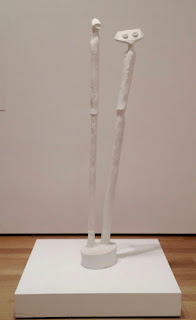
Final development of plaster cogs: I decided to move away from simply piling my cogs on top of each other or on top of a light source, it didn't feel right to me and when looking at the different options I had it all seemed lacklustre and boring. while doing research I was inspired by artists such as Andy Goldsworthy and his land art working with stone stacking, Michael Grab, as well as my own experience of finding stone stack on hikes and more famous structure such as Stone Henge. Firstly, I experimented with simple stacking without using precarious and odd angles, just piling different sized cogs on top of each other, I thin used the parts of a broken cog to test out the super glue that I had and see if it worked and was strong enough which it was. I use super glue to attach the cogs together, The way in which they have been stacked is random as I wanted the structures to feel authentic, like they could be found naturally in a landscape. I started with one cog laying...






